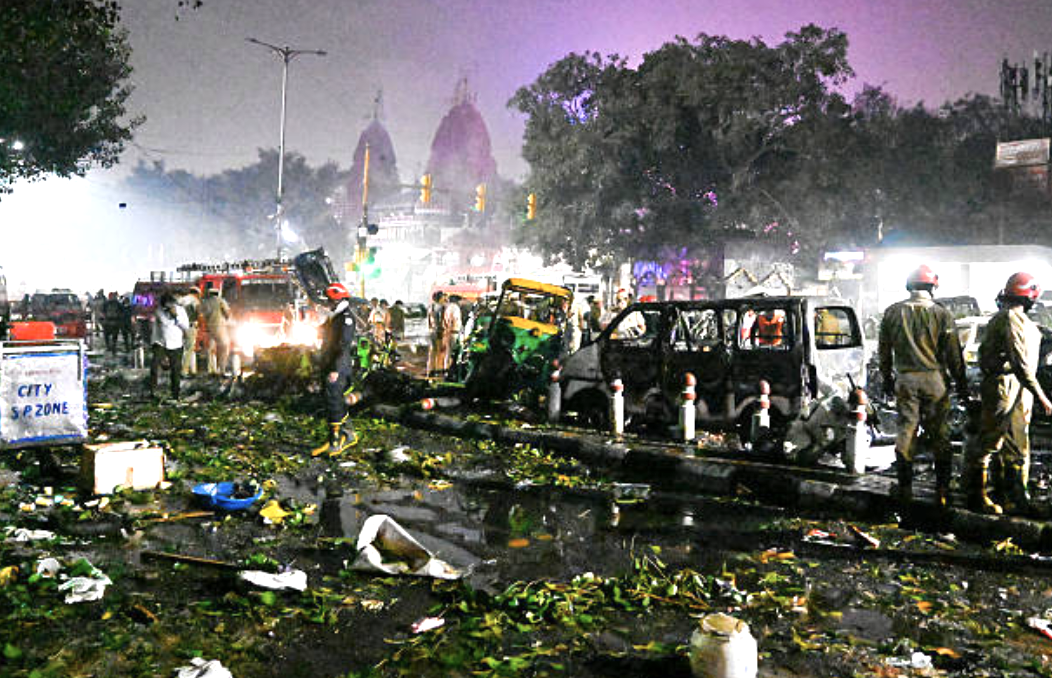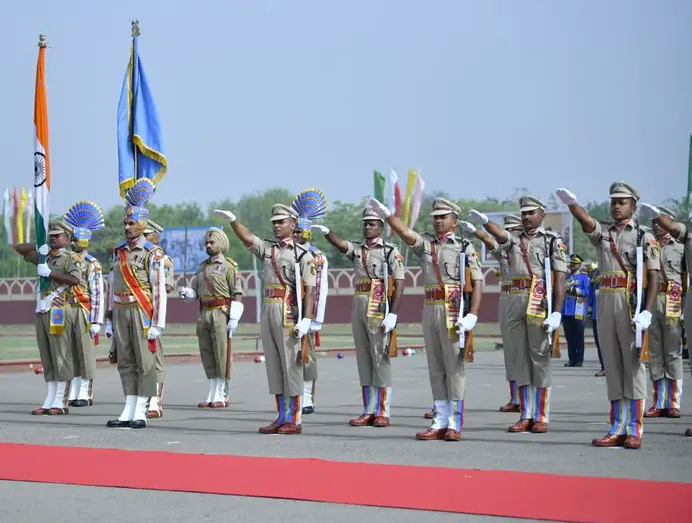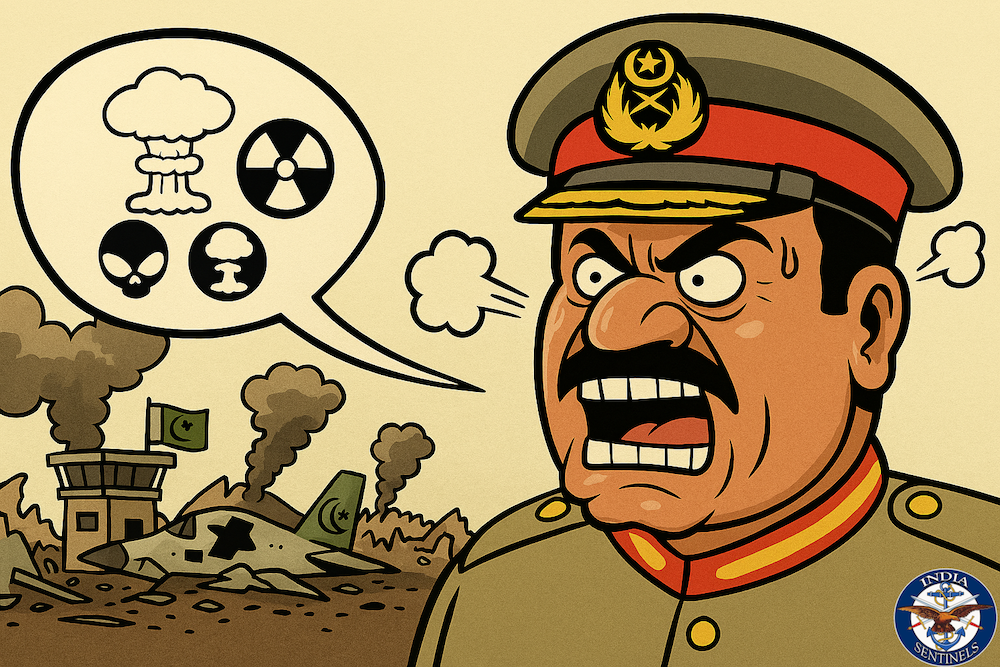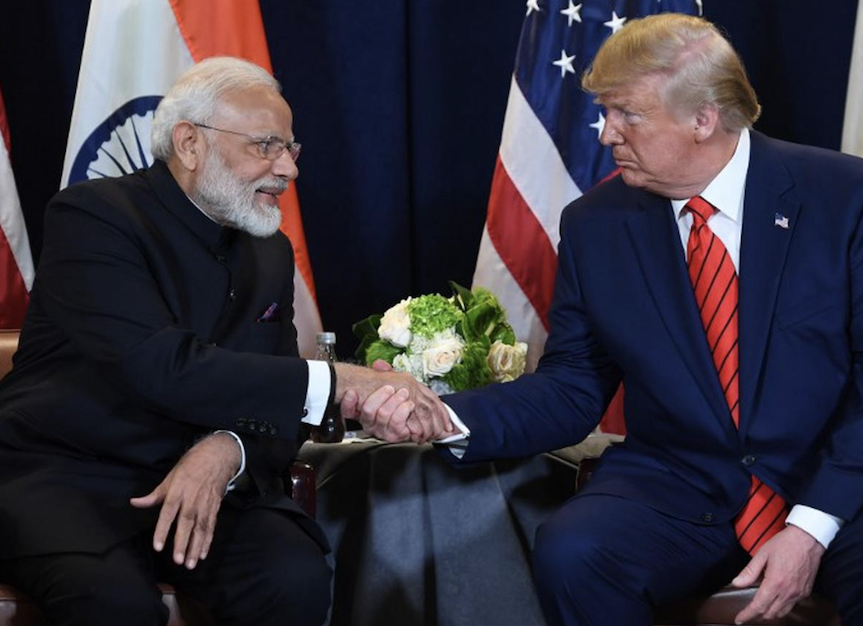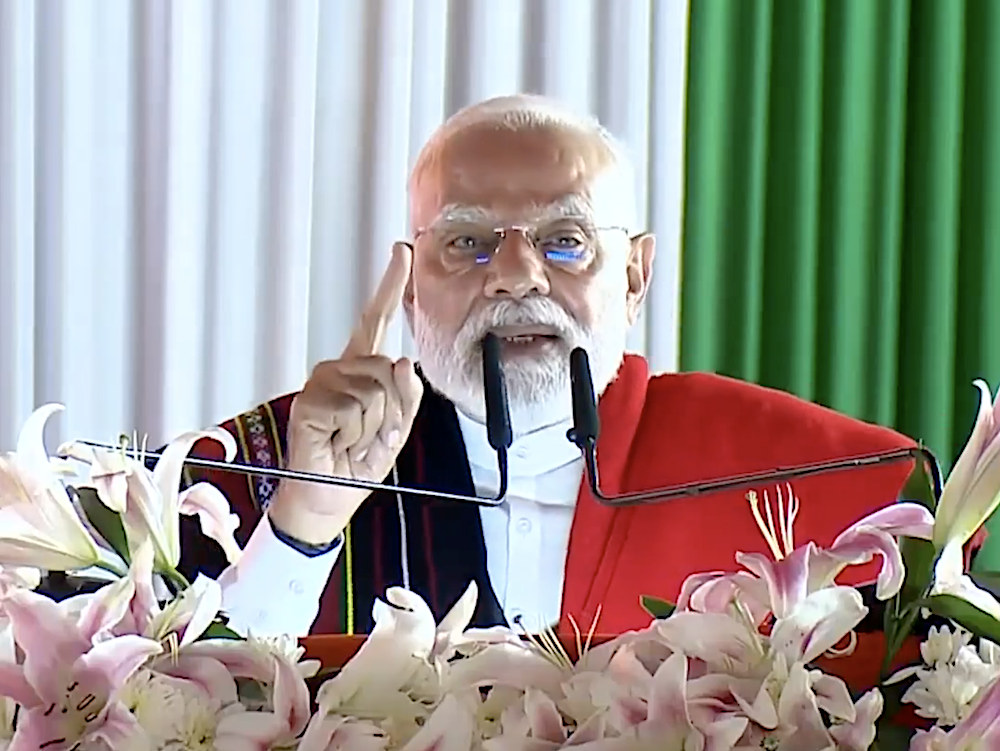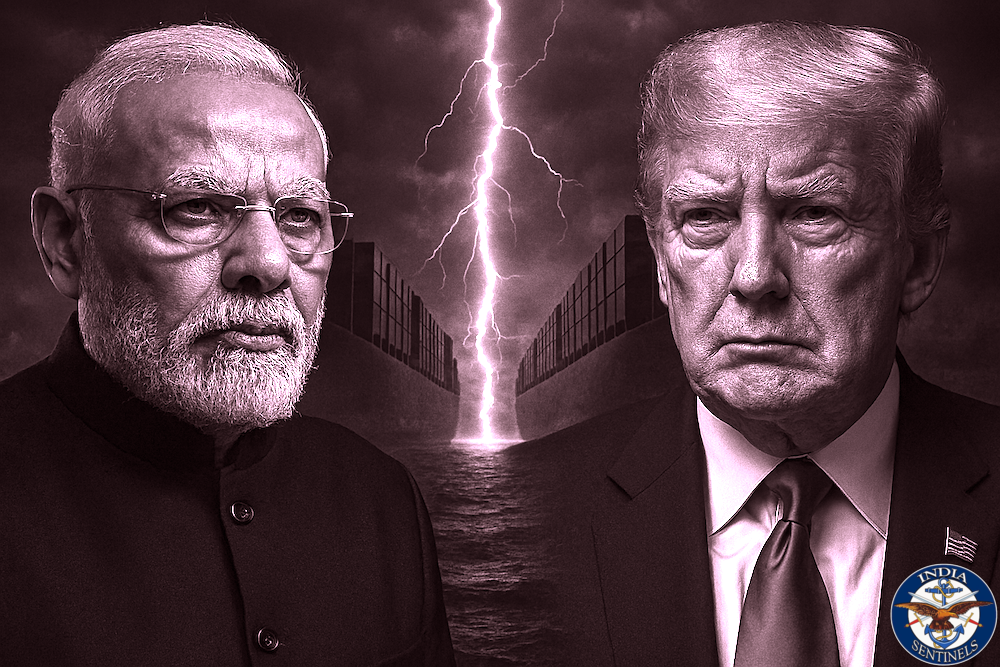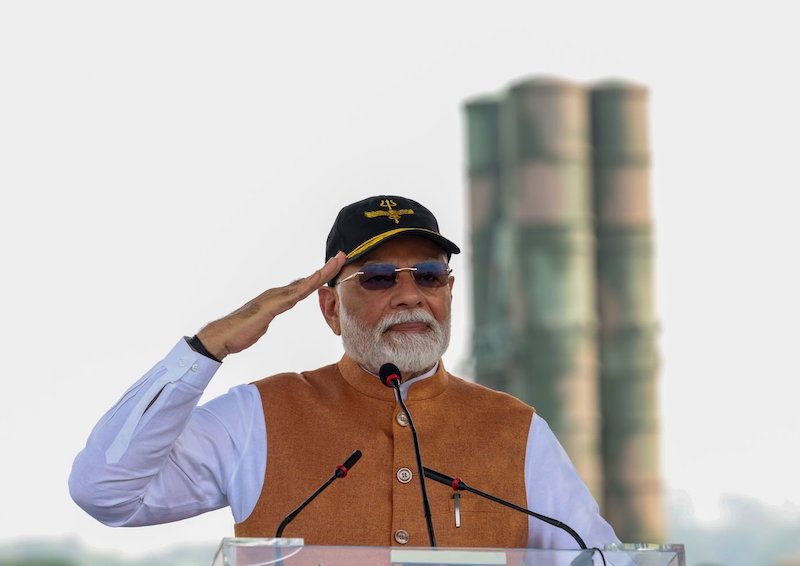 Narendra Modi during his visit to the Adampur airbase in Punjab, which Pakistan falsely claimed to have hit. (Photo: X/@narendramodi)
Narendra Modi during his visit to the Adampur airbase in Punjab, which Pakistan falsely claimed to have hit. (Photo: X/@narendramodi)
The apparently United States-brokered ceasefire between India and Pakistan on the evening of May 10, 2025, just three days after India’s retaliatory strikes on terrorist hubs in Pakistan and Pakistan-occupied Kashmir (PoK), stunned observers worldwide. This outcome was particularly surprising given India’s capacity and capability to not only destroy terror infrastructure but potentially disintegrate Pakistan through its superior economic and military might.
As the dust settles following the ceasefire, it is time to analyse Operation Sindoor, the sudden cessation of hostilities, and its implications for Kashmir, terrorism, and India’s international standing.
In his address to the nation, the prime minister, Narendra Modi, asserted – and rightfully so – that Indian armed forces had inflicted heavy damage on Pakistan. Modi further claimed that this substantial blow to Pakistan’s military infrastructure forced Pakistan to plead with the international community for intervention to stop the conflict.
Read also: Decoding India’s strategic messaging amid nuclear speculation surrounding Pakistan’s Kirana Hills
This raises a critical question: if India held such a strong position, why did the government agree to an immediate ceasefire, effectively bailing Pakistan out of a difficult situation? Was it due to India’s strike on Pakistan’s nuclear facility at Kirana hills, or was it Pakistan’s shrewd use of nuclear threats to extricate itself from a self-created mess and force India to accept a ceasefire under US pressure – which also brought the Kashmir issue back into focus?
Did this decision represent a continuation of India’s historical legacy of squandering military gains at the altar of political and diplomatic expediency? Would it not have been better to delay the ceasefire and announce it on India’s own terms rather than under US pressure?
Meticulous Execution
Operation Sindoor was meticulously executed on the intervening night of May 6 and 7 and aimed to demonstrate India’s firm resolve to avenge the Pahalgam terror attack while showcasing India’s zero tolerance for cross-border terrorism. The operation targeted five locations in PoK (Muzaffarabad, Kotli, and Bhimber) and four locations in Pakistan’s Punjab province (Muridke, Sialkot, and Bahawalpur).
The operation conclusively established a political doctrine of avenging cross-border provocations that shatter national conscience by indiscriminately targeting Indian citizens and challenging India’s sovereignty and territorial integrity. This doctrine firmly establishes the principle that cross-border sponsored terrorism will invite decisive military retaliation.
Read also: Calling Pakistan’s nuclear bluff – India’s new counterterrorism resolve deserves applause
This doctrine of retaliation began taking shape through cross-line of control (LoC) surgical strikes following the Uri terrorist attack in 2016. It was operationalized again at Balakot to avenge the 2019 Pulwama attack. The significance of this doctrine lies in the fact that, for the first time, India openly used kinetic action to respond to Pakistan-sponsored terrorism, reinforcing the alignment of political-military aims in low-intensity conflict (Lico) environments and marking a politico-strategic shift in dealing with terrorism.
Operation Sindoor differs significantly from both Uri and Balakot, which were standalone operations.
Scale and Impact
It may be too early to judge whether Operation Sindoor will deter India’s western neighbour from exporting terrorism into Jammu & Kashmir. However, Operation Sindoor was qualitatively and quantitatively of a different magnitude compared to previous actions.
Read also: Pahalgam attack – An opportunity to unite against terrorism
In this operation, all three branches of the armed forces along with the Border Security Force (BSF) were reportedly used to strike terrorist headquarters, training centres, and launch pads. The operation specifically targeted Lashkar-e-Taiba (LeT) and Jaish-e-Muhammed (JeM) headquarters in Muridke and Bahawalpur respectively – two terrorist organizations that evoke strong emotional responses from Indians as the masterminds behind the 2008 Mumbai attacks and 2019 Pulwama attacks. The strikes in Pakistan’s heartland province of Punjab will certainly resonate with Indians for a long time.
India’s response to the Pahalgam attack was focused, measured, and non-escalatory, as stated by the Ministry of Defence, since only terrorist hubs were targeted. It was only after Pakistan targeted military installations in northern and western parts of India using drones and missiles that India was forced to retaliate against Pakistan’s strikes on military establishments. Indian armed forces then targeted air-defence radar systems at numerous locations, neutralizing air-defence systems at Lahore and elsewhere.
Pakistan also increased the intensity of unprovoked firing across the LoC using mortars and artillery, targeting civilian areas. India was left with no choice but to retaliate in self-defence.
Read also: How India checkmated Pakistan Army chief Gen Asim Munir’s dream project
National Response to Pahalgam
The Pahalgam attack shattered the national conscience. Every right-thinking Indian was deeply anguished by these cold-blooded and ostensibly communally motivated killings, aimed at creating sectarian division across India. The incident brought the entire political spectrum together, with all political parties supporting the government’s decision to take action against Pakistan to avenge the Pahalgam killings.
There is no denying that Pakistan’s military establishment is deeply involved in strategizing and sponsoring cross-border terrorism in Jammu & Kashmir through infiltration and organizing local support. In keeping with this understanding, India’s armed forces carried out precision strikes on core terrorist infrastructure, targeting nine locations housing headquarters and training camps disguised as religious sites and civilian establishments. Thus, despite the highly provocative Pahalgam carnage, India’s aim remained non-escalatory.
By targeting only terrorist infrastructure, India showed remarkable restraint and respect for humanitarian aspects and laws that prohibit targeting innocent civilians in combat zones.
Read also: Pahalgam attack is a wake-up call to shed myopic view on J&K proxy war
Will Pakistan Change Course?
Now the question arises: will India’s aggressive doctrine of retaliation discipline Pakistan and prevent it from exporting terrorism into Jammu & Kashmir and elsewhere in India? History suggests otherwise – it has not happened despite surgical strikes and Balakot. Considering previous experience, it may not happen now despite Pakistan suffering a crippling and humiliating blow along its front in Punjab and PoK. Pakistan’s political and military establishment thrives and survives on the Kashmir issue, using it to distract citizens deprived of development and basic amenities.
This raises questions about the politico-strategic aim of Operation Sindoor. Should it have been limited to teaching India’s western neighbour a lesson by striking at terrorist infrastructure, or should it have encompassed larger objectives? Arguably, India faltered from the beginning by restricting the operation to retaliation rather than expanding its scope to degrade Pakistan’s military capabilities. If necessary, more time should have been taken to plan and execute a more comprehensive operation.
India needs to realize that the damage caused to Pakistan’s military and terrorist infrastructure may not be significant enough to force a rethink of Pakistan’s policy of using proxy warfare to bleed India through Kashmir. There is no certainty that these strikes will prevent future terrorist attacks in Jammu & Kashmir.
Read also: Intelligence, structured force deployment key to end J&K militancy
Limited Political and Military Aims
In low-intensity conflict environments in our national context, political and military aims have typically been aligned and limited to uprooting terrorist infrastructure. Only when forced by circumstances might these aims extend to degrading military capabilities, which happened in the present context where air and missile power was used within a limited window to target military infrastructure in retaliation.
The political and military aims were unified, directed at destroying or neutralizing terrorist infrastructure to cripple it and show the world the true face of the “Pakistan state and its deep state.” The outcome of this mini-war is neither clear nor are the gains and losses unambiguous, lost in the haze of disinformation and deliberate silence on both sides seeking psychological advantage.
How successful India has been through these strikes in curbing Pakistan-sponsored terrorism only time will tell. Military gains and losses will also become clearer with the passage of time.
Another important factor is that western powers counselled India toward restraint and dialogue with Pakistan without condemning Pakistan itself. No country in the world, including the United States, condemned Pakistan-sponsored terrorism; rather, Pakistan was rewarded with a handsome tranche of International Monetary Fund (IMF) loans, which it may utilize to fund terrorism.
Read also: India must consolidate its western front to tame Pakistan
Politico-Strategic Implications
What are the politico-strategic implications of Operation Sindoor and the sudden ceasefire? Let us consider them one by one.
First, it establishes India’s political doctrine of aggressive retaliation to proxy warfare, which in the long run may help reduce terrorism in Jammu & Kashmir. However, before any future aggressive retaliation, India may need to clearly demonstrate Pakistan’s involvement to gain global endorsement.
Second, by accepting a sudden ceasefire under US pressure within three days of military operations, India has unintentionally thrown the Kashmir issue back into international focus, relegating terrorism and proxy war to the margins. Though India rejected the notion of a neutral venue for negotiations on Kashmir, US pronouncements brought Kashmir to the forefront as a core issue between the two countries.
India belatedly tried to contain the damage by announcing that any negotiations with Pakistan must be limited to the return of PoK to India and addressing terrorism. However, India’s position seems diluted by the US president, Donald Trump, asserting that his threat of using trade as a punitive tool was used to make both countries agree to a ceasefire.
Read also: How Trump’s tariff plans could reshape US-India defence ties
The politico-strategic advantages of Operation Sindoor are presumably twofold: to showcase India as an emerging regional power through military might ready to confront hostile neighbours in both east and west who practice terrorism as state policy. In the west, Pakistan is actively involved in terrorism in Jammu & Kashmir, and in the east, Bangladesh is reportedly reviving support to extremist groups like the United Liberation Front of Assam (Ulfa) by establishing training camps in Bangladesh territory with Inter-Services Intelligence (ISI) support close to the Assam border.
The cross-border strikes were aimed at demonstrating to the world that India will not tolerate terrorist targeting of its citizens and will treat such acts as acts of war. Thus, the first politico-strategic advantage established India as an emerging regional power. The second politico-strategic advantage is the establishment of retaliation as a national doctrine.
Read also: Robust HUMINT network is the key to defeat militancy in Jammu & Kashmir
The Way Forward
There is a need to leverage the politico-strategic gains of Operation Sindoor in tandem with internal stabilization measures on security and development in Jammu & Kashmir to deter cross-border sponsors from exporting terrorism and local cells from supporting it. By characterizing Operation Sindoor as non-escalatory, India missed an opportunity to substantially degrade Pakistan’s military capabilities and inflict economic damage.
The doctrine of aggressive retaliation needs refinement considering Pakistan’s long-established approach to terrorism. Controlled retaliatory actions may not be sufficient to rein in Pakistan from sponsoring terrorism. To consolidate the gains of this operation, India must be prepared to carry forward military action to include degrading all Pakistani airbases and surveillance command centres used for deploying air power, rendering the country’s air force operationally ineffective, while simultaneously targeting its military and naval establishments if Pakistan again resorts to terrorism as a tool of state policy.
India also needs to impose costs in the cyber and space domains.
The real politico-strategic advantage will only materialize if Pakistan is forced to abandon terrorism as a tool of state policy. Additionally, India needs to undertake internal stabilization measures, including hinterland development, improved security along the international border and the LoC, and enhanced internal security deployment for lasting peace in the Union territory of Jammu & Kashmir.
The true test of the politico-strategic advantages accruing from Operation Sindoor lies in the future. Developments on the terrorism front will ultimately determine the efficacy of the prematurely halted Operation Sindoor.
In the meantime, it is crucial to draw the right lessons to consolidate the gains for strengthening national security.
Disclaimer: The views expressed in the article are the author’s own and don’t necessarily reflect the views of India Sentinels.
Follow us on social media for quick updates, new photos, videos, and more.
X: https://x.com/indiasentinels
Facebook: https://facebook.com/indiasentinels
Instagram: https://instagram.com/indiasentinels
YouTube: https://youtube.com/indiasentinels
© India Sentinels 2025-26

